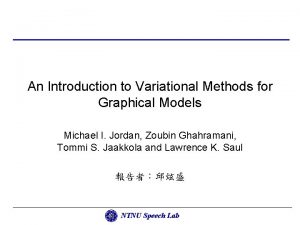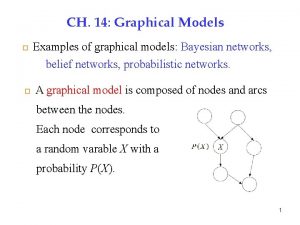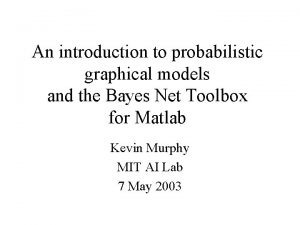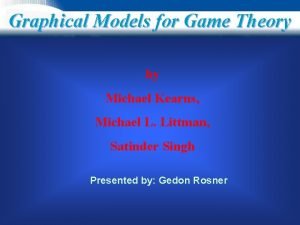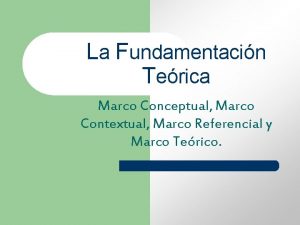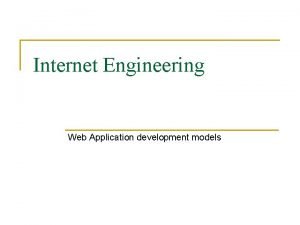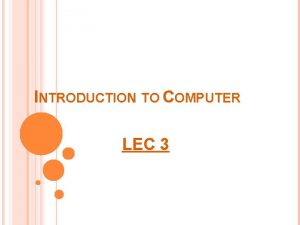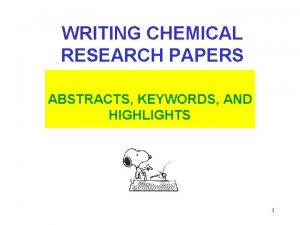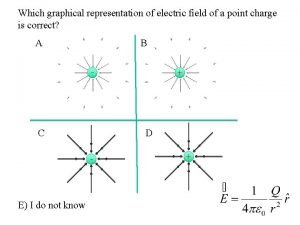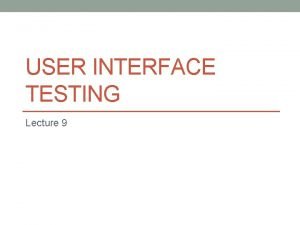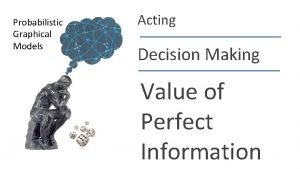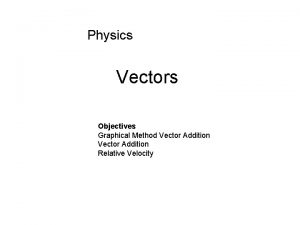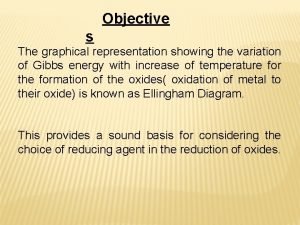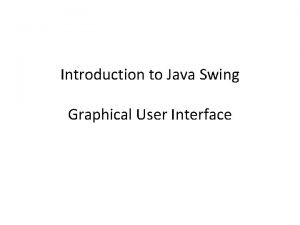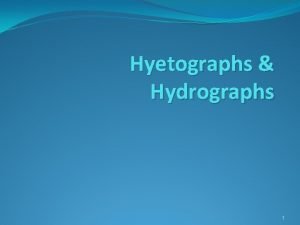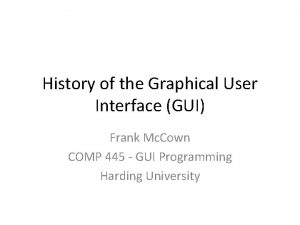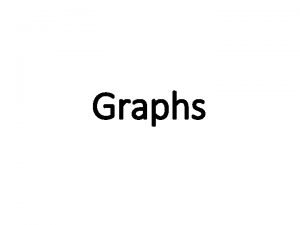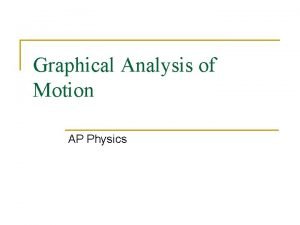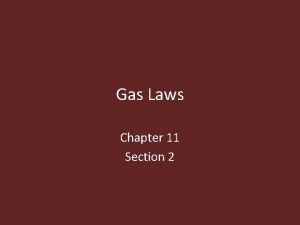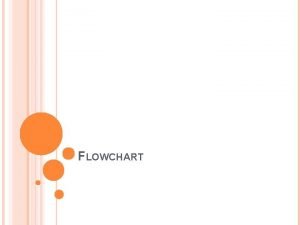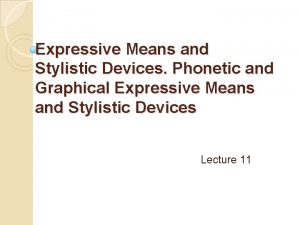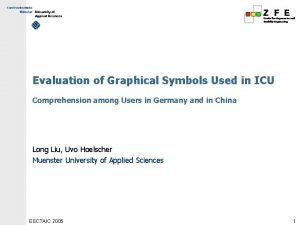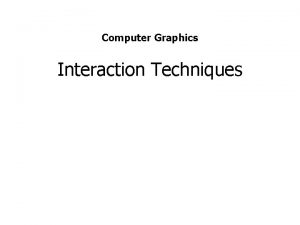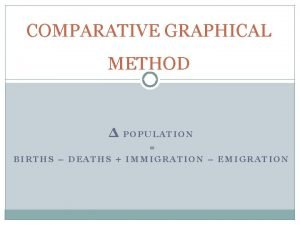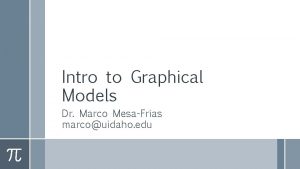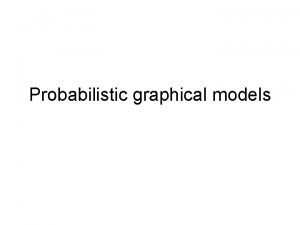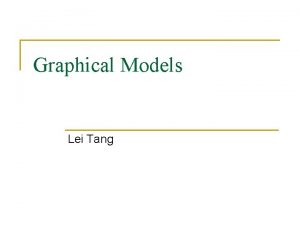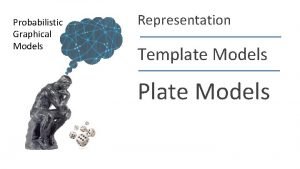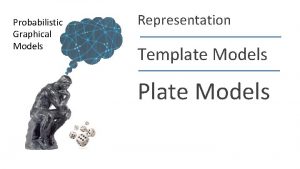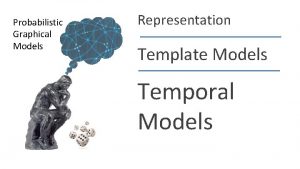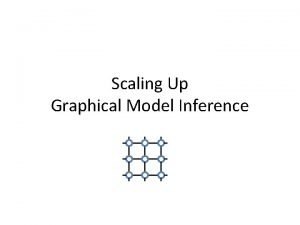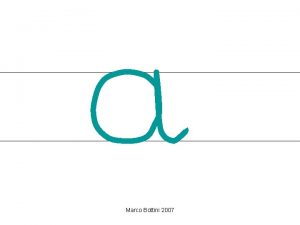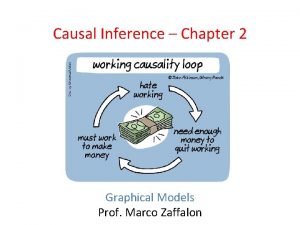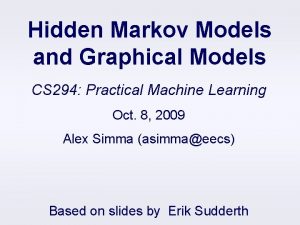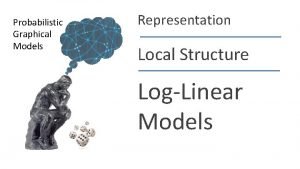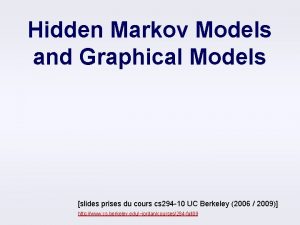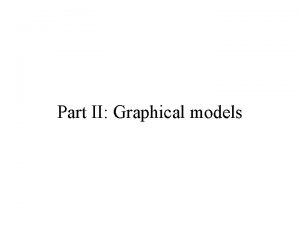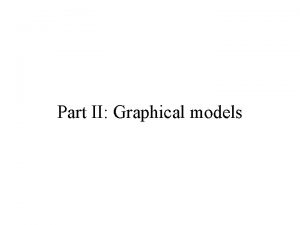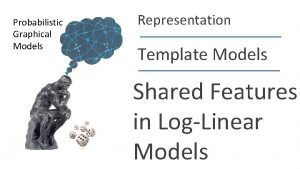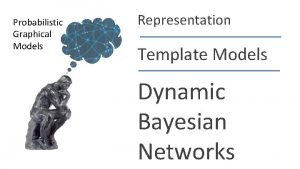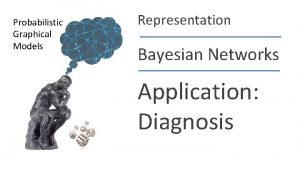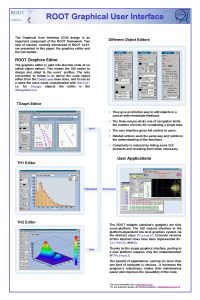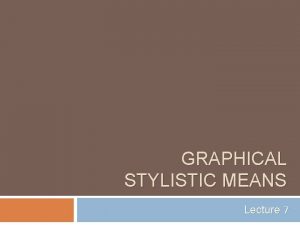SPECIAL APPLICATION OF GRAPHICAL MODELS Dr Marco MesaFrias
























![Method: Step 5. Simulating causal processes (example, cont. ) [1] 0. 1824 [1] 0. Method: Step 5. Simulating causal processes (example, cont. ) [1] 0. 1824 [1] 0.](https://slidetodoc.com/presentation_image_h/1a2de5a59f92560a62267e63d601395a/image-25.jpg)











- Slides: 36

SPECIAL APPLICATION OF GRAPHICAL MODELS Dr. Marco Mesa-Frias marco@uidaho. edu

Case-Study Example “Assessing framing assumptions in health impact assessment: A housing intervention example” Mesa-Frias et al 2013

Outline Background � � Definitions Case study illustration Objective Methods Results Conclusion

Background: Case-Study Improving housing insulation: example of an intervention ‘We spend around 90 % of the time inside buildings, indoor air quality can have an impact on health. Indoor air quality can be affected by’: Ventilation- e. g. ‘can lead to the entrance of outdoor air pollution and reduced energy efficiency’ Insulation- e. g. ‘improves energy efficiency but reduces ventilation leading to increased indoor moisture and the creation of mould; mould has been linked to respiratory conditions and other health problems’ The Pure Intrawise project

Background: Health Impact Assessment HIAs assess the positive or negative effects attributable to any policy intervention. Quantitative HIA models can broadly be grouped into the following: -Health hazard characterization models -Wider health impact assessment models

Uncertainty in environmental health impact assessment- improved housing insulation Uncertainty in how to define the causal Uncertainty We are in Uncertainty dealing how to define with a the complex strengths system of the causal associations in how to define the associations system

Background: Definitions Nature of uncertainty • Variability • Lack of knowledge Location of uncertainty Analysis • Parametric uncertainty Conceptualizing the problem • Framing of the problem • Defining the boundaries Briggs et al, 2009; Knol et al 2009

Background: Lit review Key findings from the literature review Most probabilistic techniques cannot fully distinguish between the two natures of uncertainty: “lack of knowledge” and “variability” Current quantitative methods in HIA are less suitable to handle uncertainty associated with the formulation and conceptualisation of the model No consensus or unified approach exists to quantify the conceptual sources of uncertainty in the context of health impact assessment Mesa-Frias et al 2012

Background: Research gaps. Uncertainty in: Problem and model formulation Defining the boundary of the system to be modelled Definition of the “context or “scenario” If conceptual sources of uncertainty are not addressed, they can cause “problems” in the interpretations of environmental health assessments!

Background: Research gaps. Uncertainty perspectives:

Background: Resistance against improvements “The honest analyst/biologist” � “My real interest is about organism ‘A’, so I am working in a risk assessment project in order to get money for my work with organism ‘A’. I will stick to the belief that organism ‘A’ is highly important for the risk assessment and thus fight against other organisms and factors outside my expertise as important for the risk. ” Peter Borgen Sørensen

Background: Resistance against improvements “The honest policy maker” � “I have to please the political system in order not to get stressed and to improve my position at work. Thus, I need to conclude that everything is under control and nothing is hidden from our attention. So, I don’t want to discover unrecognised factors that can lead to increase in risk. ” Peter Borgen Sørensen

Background: Why we need improvements The honest analyst � “I have to protect humans and eco-systems against harmful effects. My work fails if such effects emerge, so I have to fight against unrecognised factors” Peter Borgen Sørensen

Objective To develop a quantitative framework to handle framing assumptions in an explicit and systematic way in health impact assessment models. To apply the framework in a case study example of improving housing insulation.

Methods for dealing with framing assumptions in HIA: 5 steps approach Synthesizing the evidence on causal pathways from the literature. Constructing the causal diagrams from individual studies Representing mathematically causal diagrams into a system matrix Measuring the structural properties of the system matrix Simulating causal processes

Method: Step 1. Synthesizing the evidence on causal pathways from the literature A literature search of Ovid Medline (1948 -2011) was conducted using the search terms: ‘housing’ combined with ‘insulation’ and ‘health’ to identify studies investigating factors and outcomes influencing the relationship between housing insulation and health. Causal pathways associating housing insulation and health were identified quantitatively

Method: Step 2. Constructing the causal diagrams from individual studies identified from the literature Study 1 N 3 N 1. . . . N 2 Study k N 1 N 2

Method: Step 2. Constructing the causal diagrams from individual studies identified from the literature(example, cont. ) The causal weight of an association is defined as the natural logarithm of the odds ratio (OR), if it is reported in a study k between a pair of nodes i, j. Where represents the measure of effect (or causal weight) between two nodes.

Method: Step 3. Representing mathematically the combined causal diagram into a system matrix Study 1 N 3 Connection matrices N 1 N 2 . . . . Study k N 1 N 2 System matrix

Method: Step 3. Representing mathematically the combined causal diagram into a system matrix (example, cont. )

Method: Step 3. Representing mathematically the combined causal diagram into a system matrix (example, cont. )

Method: Step 4. Measuring the structural properties of the system matrix

Method: Step 5. Simulating causal processes Matrix multiplication by a state vector Vj Application of threshold function

Method: Step 5. Simulating causal processes (example, cont. ) Ex: Initial state vector (unit vector) [1, 1, 1] x s’ij = [0, -1. 5, 0. 2] No. of Iteration Transform each resulting vector value using a threshold function and multiply again by the matrix. . . Until vector values are stable (DO NOT VARY)
![Method Step 5 Simulating causal processes example cont 1 0 1824 1 0 Method: Step 5. Simulating causal processes (example, cont. ) [1] 0. 1824 [1] 0.](https://slidetodoc.com/presentation_image_h/1a2de5a59f92560a62267e63d601395a/image-25.jpg)
Method: Step 5. Simulating causal processes (example, cont. ) [1] 0. 1824 [1] 0. 5 0. 2 N 1= indoor temperature (cold) N 3= cardio-respiratory conditions N 3 -0. 5 -1 N 2 [1] 0. 5498 N 2= psychosocial wellbeing These values represent how the variables rank in relation to each other once we have taken into consideration feedbacks within the system

Summary of methodological procedures Ex: Fig 1. B Connection matrices Study 1 Natural logs of risk ratios or percentage changes Ex: Study 2 N 1 N 3 N 2 Fig 1. C Augmented matrix N 1 N 4 N 2 N 3 N 4 N 1 N 1 N 2 N 2 N 3 N 4 Individual causal diagrams constructed for each study reporting associations Literature derived associations Ex: All matrices are combined into one augmented matrix Each causal diagram is represented in a matrix Values are normalized (by dividing each element by the absolute maximum across all elements) Fig 1. A Causal diagrams Study 1 0. 2 N 4 N 3 N 1 2. 1 -0. 5 N 1 1. 5 The combined ‘causal system’ is constructed Study 2 N 2 2 Ex: Fig 1. D Causal system Fig 1. E System matrix N 2 0. 06 N 4 N 3 N 1 -0. 14 1 Shaded boxes are mid-point calculations; ovals are diagrams; Ni= nodes; doted arrows are examples, straight arrows are procedures N 2 N 1 N 2 0. 6 N 3 N 4 N 2 N 3 N 4

Result: Step 1. Synthesizing the evidence on causal pathways from the literature

Result: Step 2. Constructing the causal diagrams from individual studies identified from the literature Positive causality Negative causality Positive (+) or negative (-) signs describe a positive causality or a negative causality respectively. A positive causality or a causal increase indicates when node i increases, node j increases. A negative causality or a causal decrease indicates when node i increases, node j decreases.

Thermal Insulation Energy Consumption Air tightness Mechanical Ventilation System Ventilation Indoor Cold Indoor Air Quality Mould / Humidity Cardio-Respiratory Morbidity /Mortality Impaired Mental Wellbeing Result: Step 3. Representing mathematically the combined causal diagram into a system matrix Thermal Insulation 0 -0. 15 0. 37 0 0 -0. 03 0 -0. 01 0 0 Energy Consumption 0 0 0 0 0 Air tightness Mechanical Ventilation System 0 0 -0. 2 0 0 0 0 0. 39 0 0 0 Ventilation 0 0 0 0. 16 0 0 0 Indoor Cold 0 0 0 0 1 0. 84 0. 36 Indoor Air Quality 0 0 0 0 0. 71 0 Mould / Humidity Cardio-Respiratory Morbidity /Mortality 0 0 0 0 0. 31 0 0 0 Impaired Mental Wellbeing 0 0 0 0 0

o. R di ar C nodes C el ng lb ei y ta lit or ity id um ity d ol n io ua l Q /M l. W en ta M ir /H ty di bi M or ld ou M or A do In do or In at nt il Ve Sy st em ss pt io n at ht ne tig tio n ir A su m on C ns ul al I nt ila Ve pa ire d Im y to r ira es p al ic ha n ec M gy En er er m Th 0. 50 inputs 0. 00 outputs Centrality Index Result: Step 4. Measuring the structural properties of the system matrix 2. 50 2. 00 1. 50 1. 00

Nodes es o. R di C ar ta l en W ei ng lit y or ta el lb /M ity id lit y ua ol d C um /H id ity d ou l or b M M d ire pa Im ry M ir Q r. A do o In or In do n at io st em Sy nt il Ve n tio es s ht n Ai rt ig pt io n m n la tio In su on su C til a ic al Ve n ha n pi ra to ec M y er g En al m Th er Level of causal activity (flow of causal interactions) Result: Step 5. Simulating causal processes 0. 80 0. 70 0. 60 0. 50 0. 40 0. 30 0. 20 0. 10 0. 00

Results: Summary As expected, indoor cold, mould, humidity and cardiorespiratory morbidity/mortality were found to be central to the framing assumptions. The simulation recorded ‘high level of causal activity’ (i. e. higher than 0. 5) in the following nodes: cardio-respiratory morbidity / mortality, impaired mental wellbeing, mould / humidity, indoor air quality, ventilation and air-tightness

Some comments on the method for assessing framing assumptions Modelers can use graph theory with FCM to analyse more easily a greater number of system structures without running full scale simulations. The perturbation analysis might be used to explore how the system described will respond to a particular set of inputs. The pattern of causal interactions can help to highlight the complex cause and effect relationships between driving forces and health impacts.

Limitations of the method for exploring framing assumptions As a conceptual modelling tool, this method is only concerned with model formulation, making the causal assumptions explicit. It is not a substitute for parameter estimations or statistical tests. Interpretation should be considered relative to other numbers rather than in absolute terms.

Key Messages This framework can be used to quantify causal assumption in health impacts studies of complex interventions. Sources of uncertainty can include the framing assumptions associated with the formulation of a Health Impact Assessment (HIA) during the assessment stage. This approach makes explicit the framing assumptions of a HIA and can be used to identify the main variables of influence which are implicit in the assumptions.

Thank you…. .
 An introduction to variational methods for graphical models
An introduction to variational methods for graphical models Flair furniture company linear programming
Flair furniture company linear programming Action utility
Action utility An introduction to probabilistic graphical models
An introduction to probabilistic graphical models Graphical models for game theory
Graphical models for game theory Marco conceptual vs marco teorico
Marco conceptual vs marco teorico What is the difference between modals and semi modals?
What is the difference between modals and semi modals? Web application development models
Web application development models Communication and interpersonal skills cv
Communication and interpersonal skills cv 3 computer software
3 computer software Special skills for a job application
Special skills for a job application Sample abstract for research paper
Sample abstract for research paper Graphical representation of electric field
Graphical representation of electric field Graphical user interface testing
Graphical user interface testing Principle of input design
Principle of input design Principles of user interface design
Principles of user interface design What graphical model is appropriate for decision-making?
What graphical model is appropriate for decision-making? Graphical method physics
Graphical method physics Simultaneous equations linear and non linear
Simultaneous equations linear and non linear Metasploit gui kali
Metasploit gui kali Graphical and numerical methods
Graphical and numerical methods Ellingham diagram is a graphical representation of
Ellingham diagram is a graphical representation of Graphical scientific calculator in c++
Graphical scientific calculator in c++ Graphical linkage synthesis
Graphical linkage synthesis Introduction to graphical user interface
Introduction to graphical user interface Java graphical user interface
Java graphical user interface Hyteograph
Hyteograph What is paradigms in hci
What is paradigms in hci History of gui
History of gui Graphs
Graphs Graphical analysis of motion
Graphical analysis of motion Boyle's law graphical representation
Boyle's law graphical representation A graphical representation of an algorithm
A graphical representation of an algorithm Graphical stylistic devices
Graphical stylistic devices Iec 60878
Iec 60878 Dragging in computer graphics
Dragging in computer graphics Graphical comparison method
Graphical comparison method
